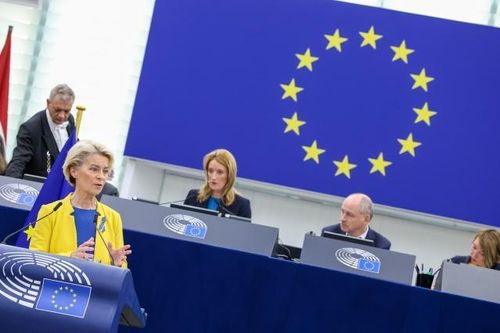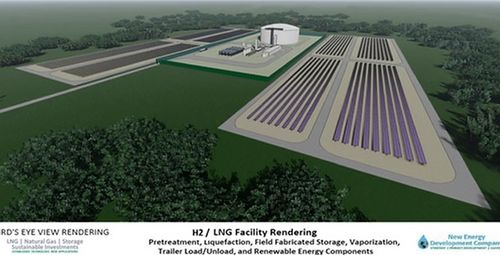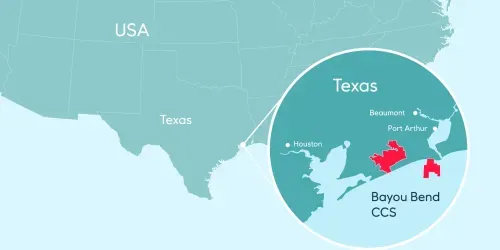The DOE has selected eight carbon capture, transport, and storage projects to receive up to $189m in funding for integrated Front-End Engineering Design (FEED) Studies.
This funding is part of OCED’s Carbon Capture Demonstration Projects Program, which seeks to address the urgent need to advance carbon management technologies. The goal of the Carbon Capture Demonstration Projects Program is to accelerate the implementation of integrated carbon capture and storage technologies and catalyze significant follow-on investments from the private sector to mitigate carbon emissions sources in industries across America.
OCED selected eight projects to begin award negotiations, which were announced on May 5, 2023.
The following provides a brief overview of the eight FEED Studies selected for award negotiation:
1. Duke Energy Indiana, LLC
Project Name: Edwardsport Flex Fuel Integrated Capture for Indiana’s ENergy Transition (EFFICIENT)
Project Manager: Peter C. Hoeflich, PE
Location: Edwardsport, Indiana
Project Summary: The proposed project includes carbon capture and sequestration at Duke Energy’s integrated gasification combined cycle facility in Edwardsport, Indiana. The proposed design uses a post combustion capture system enabling fuel flexibility from coal-gasified syngas (primary fuel), natural gas and syngas/natural gas blends. This proposed project uses Honeywell UOP CO2 capture technology with an estimated 3.6M tonnes of CO2 captured per year.
2. Entergy Services, LLC (ESL)
Project Name: Lake Charles Power Station Integrated CO2 Capture Project
Project Manager: Janelle Dana
Location: Westlake, Louisiana
Project Summary: The proposed project includes a full-scale integrated CO2 capture facility for Entergy Louisiana LLC’s natural gas combined cycle Lake Charles Power Station (LCPS). The project would use post-combustion CO2 capture technology with Mitsubishi Heavy Industries Ltd KS-21™ solvent capable of capturing a minimum of 95% of the CO2 emissions, equating to nearly 2.5M tonnes of CO2 per year. Entergy Services, LLC has partnered with Talos Energy, Inc. to develop an off-take agreement with a sequestration site approximately 23 miles from LCPS and a pipeline to transport the captured CO2 to the sequestration site for secure storage.
3. Lehigh Hanson, Inc
Project Name: Mitchell Cement Plant Integrated CO2 Capture Project
Project Manager: Gregory Ronczka
Location: Mitchell, Indiana
Project Summary: The proposed project includes integrated CO2 carbon capture, transport, and storage at the Mitchell Cement Plant in Mitchell, Indiana. The proposed project is estimated to capture a minimum of 95% of the CO2 emissions from the cement plant—approximately two million tonnes of CO2 per year. The project design uses Mitsubishi Heavy Industries Americas, Inc. technologies and an infrastructure to securely transport and sequester the CO2 in a geologic formation beneath the plant property.
4. Navajo Transitional Energy Company, LLC (NTEC)
Project Name: Four Corners Power Plant Integrated Carbon Capture and Storage
Project Manager: Harry Tipton
Co- Project Manager: Cindy Crane
Location: Navajo Nation
Project Summary: The proposed project includes an integrated CO2 capture retrofit of post-combustion CO2 capture technology, transport, and storage for the coal fired Four Corners Power Plant (FCPP) located on the Navajo Nation. The proposed project has an estimated capability of capturing a minimum of 95% of the CO2 emissions from the FCPP, representing 10M+ tonnes of CO2 per year. The project uses Mitsubishi Heavy Industries Americas, IncKS-21™ solvent for carbon capture and NTEC has partnered with Enchant Energy, LLC as the CO2 Capture Project Developer, and other institutes for development of the CO2 offtake solution, including pipeline and sequestration site development.
5. Southern States Energy Board
Project Name: Ash Grove Foreman Cement Plant Carbon Capture and Storage
Project Manager: Kenneth Nemeth
Location: Foreman, Arkansas
Project Summary: The proposed project includes integrated CO2 capture and storage associated with cement manufacturing at the Ash Grove Foreman Cement Plant in Foreman, Arkansas. The proposed project includes Air Liquide’s CryocapTM technology as the basis for post-combustion and/or process system CO2 capture, and pipeline and storage field development in the Jurassic Smackover Formation.
6. Taft Carbon Capture, LLC
Project Name: Cypress Carbon Capture Project
Project Manager: Michael Searfass
Location: Hahnville, Louisiana
Project Summary: The proposed project includes a commercial carbon capture facility at the existing Taft cogeneration power plant (i.e., natural gas fired, 3×1 combined cycle, heat, and power cogeneration) facility in Hahnville, Louisiana. The proposed project uses a solvent-based absorption post-combustion carbon capture system that separates and prepares for storage up to three million tonnes of CO2 per year representing a minimum of 90% of the CO2 emissions captured from the power plant.
7. Tampa Electric Company
Project Name: Polk Power Station Integrated CO2 Capture Project
Project Manager: Kris Stryker, Tampa Electric Company
Location: Mulberry, Florida
Project Summary: The proposed project includes retrofitting ION Clean Energy, Inc.’s post-combustion CO2 capture technology with transport and secure geologic sequestration for the natural gas combined cycle power plant at the Polk Power Station in Mulberry, Florida. This technology captures a minimum of 95% of the CO2 emissions which equates to nearly 3.7 million tonnes of CO2 per year that will be stored in secure geologic sequestration that is currently in development.
8. University of Illinois at Urbana-Champaign
Project Name: Integrated Capture, Transport, and Geological Storage of CO2 Emissions from City Water, Light and Power
Project Manager: Dr. Kevin O’Brien
Location: Springfield, Illinois
Project Summary: The proposed project includes an end-to-end carbon dioxide capture, transport, and storage solution for the Dallman 4, a pulverized coal power plant at City Water, Light and Power in Springfield, Illinois. The project is estimated to capture two million tonnes of CO2 per year and transport it to a geologic storage site in the Illinois Storage Corridor. The proposed capture system uses a Linde-BASF solvent-based system.







